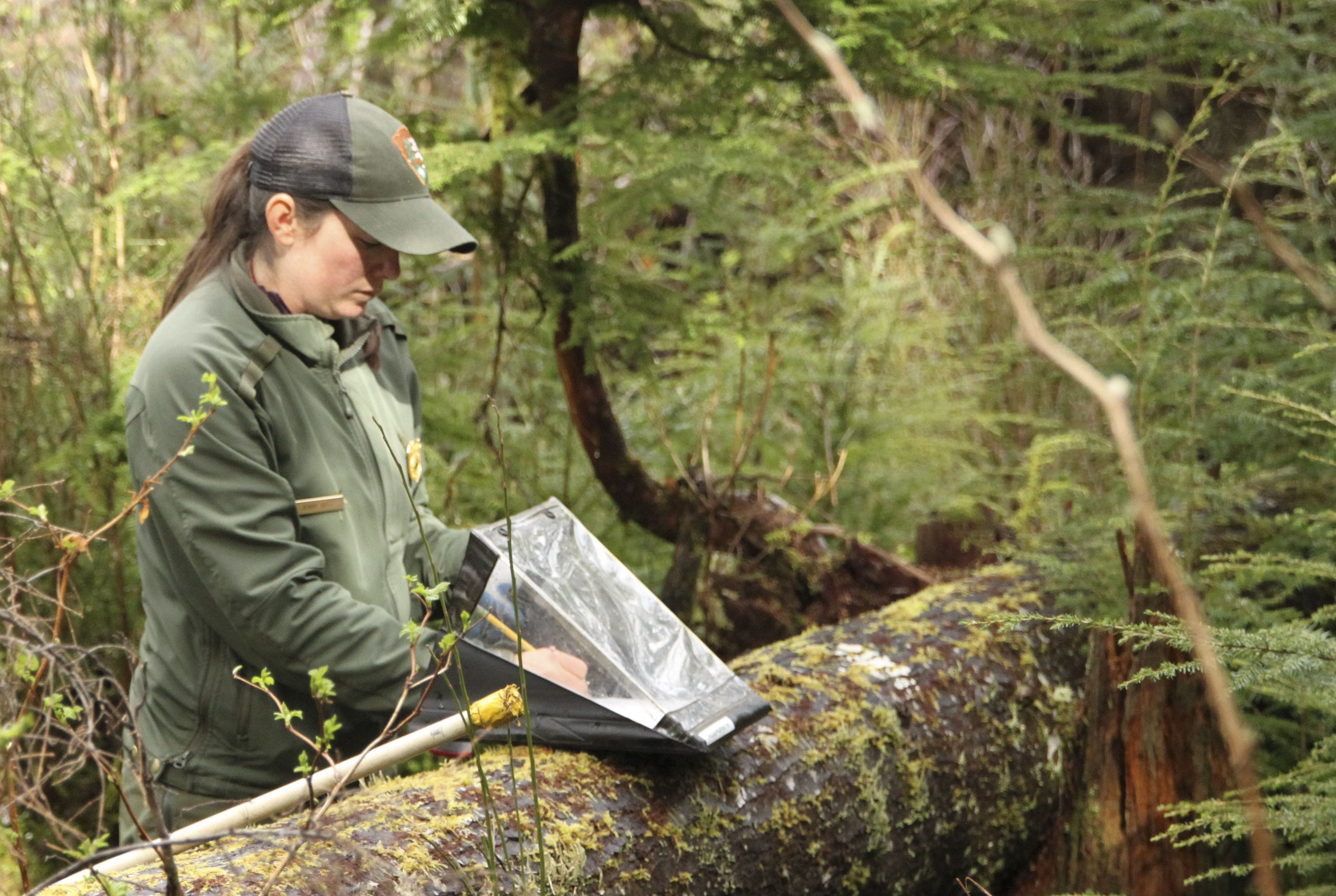During their four-month winter stay at Fort Clatsop, a member of the Corps of Discovery estimated they killed 131 elk.
The elk fed the more than 30 people staying at the fort, provided tallow for creating candles and the hides were used for making 300 pairs of moccasins.
While some Gearhart residents are tired of elk eating their flowers, Lewis and Clark National Historical Park is hoping to maintain an enduring presence of elk at the Fort Clatsop unit for visitors to experience and for the overall integrity of the park.
“There’s this realization parkwide just how important these elk herds are, both for ecological reasons and for the broader story of Lewis and Clark,” said Chris Clatterbuck, the park’s chief of resource management.
For the past six years, the National Park Service and the U.S. Geological Survey have monitored and studied how elk use the approximately 1,000 acres surrounding Fort Clatsop.
Their initial findings were released earlier this year in a report that shows between 2008 and 2012 the number of elk using park land is possibly declining. But with only four years of data, researchers aren’t sure if the results are an anomaly or evidence of an actual decline in use.
“That decline is still within the realm of uncertainty,” said Paul Griffin, a wildlife biologist with the USGS. “The decline that we saw could just be a result of having so few years supporting it.”
At other national parks, helicopters are used to do elk monitoring, however, the forest is too dense at the Fort Clatsop site to do it from the air. Instead, park staff and volunteers have been recording the presence and amount of elk feces, or as wildlife biologists prefer to call it, fecal pellet groups.
Gathering data
At more than 60 plots throughout the park, two observers check for pellets and the level of their decay, giving an indication of how often elk were present. In the fall and after observation in the spring, all the pellets are cleared out so that they can start over and measure another winter period.
Two observers are used for each plot so that they can check each other’s work, rotating around a center marker. Both check and determine if they’ve observed the same “events” or a scattering of pellets. The idea is to make sure the data is comparable across teams and across years.
As long as elk are depositing pellets at the same rate over the years, Clatterbuck said they can compare the trend in pellets as a way to look at trends in their use.
The process doesn’t determine the exact number of elk in the park, but is more about what areas of the park elk are roaming most frequently. The study also included roadside surveying of elk to get a rough estimate of the population.
There are likely two or three herds using park lands between the coast and Fort Clatsop. The elk in Gearhart, however, are likely not the same visiting park land.
Kurt Jenkins, another wildlife biologist with the USGS, said an elk’s realm is fluid and their ranges can be nearly 4 square miles.
“When the elk use as measured by these pellet groups decreases or increases in an area, we can’t be entirely sure if that’s because the whole heard is declining or whether the herd has just moved off and started using a different part of its range,” said Jenkins.
He also said elk can shift to entirely different areas depending on the time of the year.
After two more years of collecting data, Griffin said they will be able to say for certain whether the elk’s presence at the park is declining.
“There’s a lot of questions still about what the breadth and the extent of the ranges are and there’s a lot we still don’t know,” said Carla Cole, natural resources program manager at the park.
Although the study is still unclear about declines, it does give park staff an idea of whether elk gravitate to certain areas of the park. It showed, for example, that the southeastern part of the park near Colewort Creek seems to be the most popular spot for elk, which park staff say is helpful to know as the NPS continues to restore the natural landscape that was described in Lewis and Clark’s journals during the early 1800s.
Changes affect elk?
In recent years, the park has done restoration projects at Colewort Creek, Otter Point and elsewhere to reconnect the natural estuary. Thinning operations and trail building will also be analyzed to see what effect they may have on the presence of elk.
“We want to be able to tell whether any of those changes are actually affecting the way the elk are using the Fort Clatsop unit,” said Jenkins.
“I’m really looking forward to finding out how this elk density of use changes over time as the forest treatments grow up, as the understory develops in those areas that are treated and as the wetlands change in the areas that the park has done restoration work,” said Griffin.



